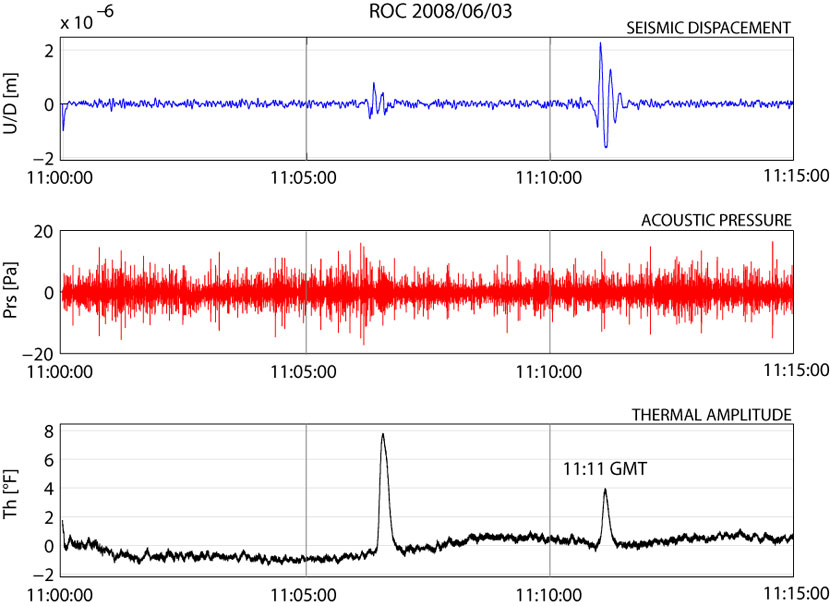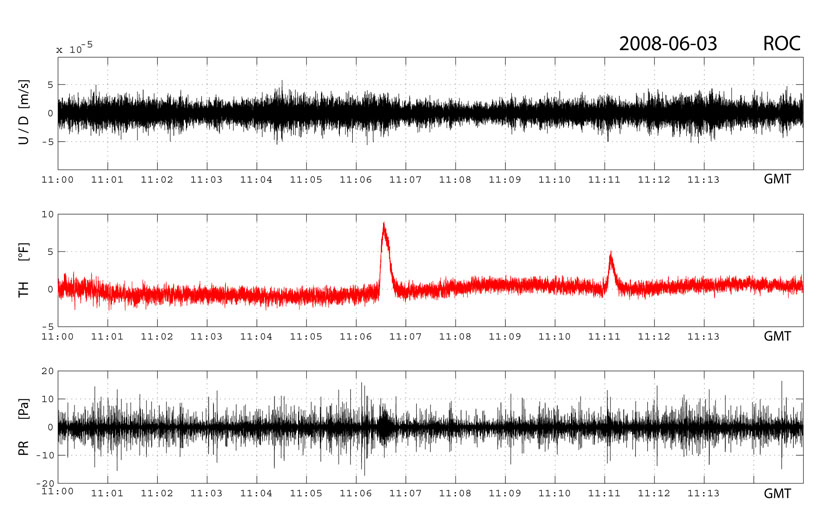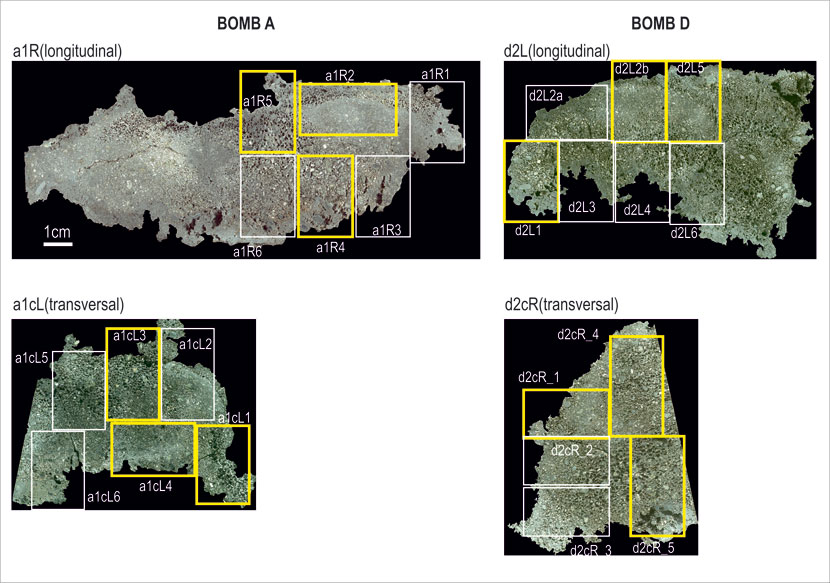 |
| |
Recherche |
|
Explosions details (2008a)
Activity |
Normal Strombolian |
Dates of the explosion |
Beginning |
End |
|
June 3rd 2008 11:11 GTM |
Explosion depth |
100 m |
VLP source from surface |
450 m |
Slug ascent velocity |
25 m/s |
Ejecta velocity in the conduit |
48 m/s |
Ballistic bomb velocities |
27-67 m/s |
Bombs maximum height |
105 m |
Distance from the vent |
22-438 m |
Geophysical data (2008a)
Seismic displacement |
|
Acoustic pressure |
|
Radiometer amplitude |
|
Thermal Video |
|


Seismic, acoustic and thermal signals acquired for the 6 June 2008, 11:11 GMT normal explosion at Stromboli
Sample quantifications (2008a)
Description |
Decimetric bombs quenched in situ from a normal Strombolian explosion |
Particle morphology |
Angular |
Particle size |
15 cm |
Particle weight
Particle density
Particle porosity |
1 Data table |
Particle glass chemistry |
1 Data table |
Minimum size of vesicles counted (pixel) |
10 |
Particle crystal content
Number of counted crystals x particle
Number of counted vesicles x particle
Particle 2D integrated vesicularity (%)
Particle Vesicle Number density |
1 Data table |
Number of images (x magnification x area) |
31 Data tables |
Vesicle equivalent diameter
Vesicle area
Vesicle perimeter
Vesicle long axis
Vesicle short axis
Vesicle orientation
Image magnification |
31 Data tables |
Bins
Na
Nv |
31 Data tables |

a1R and a1cL are the longitudinal and transverse parts of bomb A, while d2L and d2cR are respectively the longitudinal and transverse cut parts of bomb D. The white boxes locate the 24 thin sections and the yellow boxes indicate the thin sections chosen for SEM analyses.

Facies definitions
- HP facies: highly porphyritic, vesiculated regions (vesicularity types 1a and 1b) characterized by microlite-poor glass (Figures 4a, 4c, 4e);
- HPM facies: highly porphyritic, vesiculated regions (vesicularity types 1b and 1c) characterized by microlite-rich glass (Figures 4f, h, i);
- HPMd facies: is the HPM facies with deformed vesicles
- HPD facies: highly porphyritic, vesicle-poor regions (vesicularity type 2) characterized by microlite-rich glass (Figures 4a, c, g);
- HPDs facies: highly porphyritic, transitional facies between regions poor in vesicles and regions rich in rounded, small vesicles, usually smaller than 0.5 mm in diameter, of vesicularity type 1a, and characterized by microlite-rich glass (Figures 4b, d, f);
- Mixture: it is the whole thin section with some of the listed facies, without distinction
|





